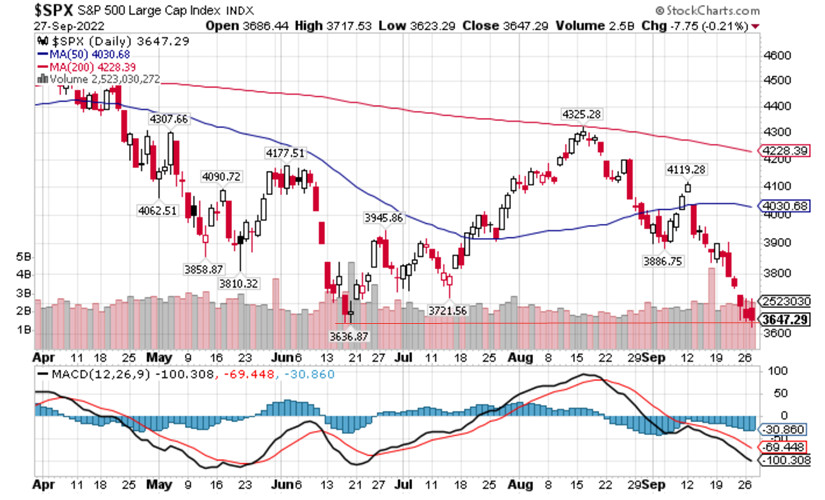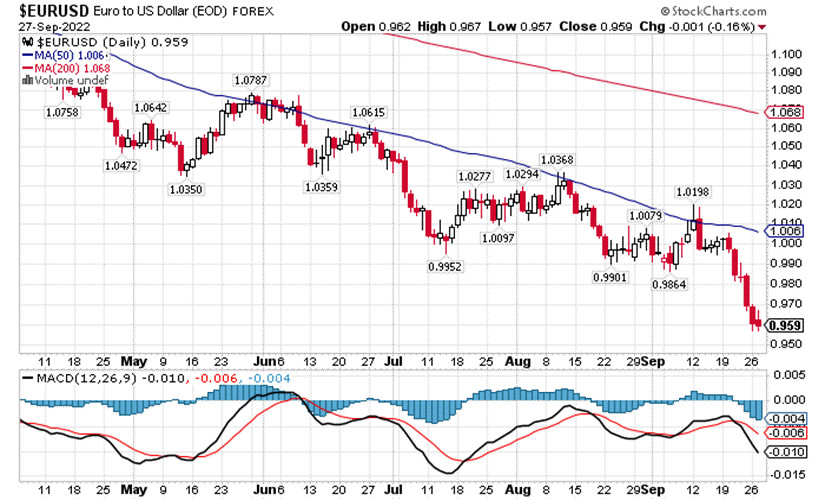Hello, dear colleagues.
The world is hiding in anticipation of the negative consequences of a rate hike by the Federal Reserve and other central banks. Even people who are far from financial markets know that on Wednesday evening, September 21, an event occurred that could plunge the world economy into shock. However, whether this is really the case, let's figure it out in this article.
I must say right away, I'm not going to belittle the importance of raising rates, but we should understand that the Fed has mastered the art of communication well enough to prepare the markets for the decision of the Open Market Committee. Therefore, investors mainly paid attention to the so-called "economic forecasts", during which it became clear what the Fed plans to do in monetary policy and what the pace of further rate hikes will be.
In turn, traders realized what to expect from the US dollar in the foreseeable future and what will happen in the stock markets in the coming months. In order to understand this, we need to understand the relationship between stocks, the US dollar, rate hikes and bond yields.
By itself, the rate hike does not bring any significant problems for the markets. Stocks can feel great amid tight monetary policy, although, of course, for a number of heavily indebted companies and so-called growth companies, this can really become a problem.
Popular opinion suggests that the cheap liquidity that fueled stock markets may dry up, which will lead to problems for investors who are forced to repay their loans, and an increase in the cost of borrowed funds, in turn, will lead to an outflow of capital from financial markets.
Indeed, a year ago the market looked overheated. With the increase in the cost of mortgage lending, borrowers began to have problems. All this is true, but it is clearly not enough for the markets to begin a steep decline, similar to what we saw last week.
The main thing that we saw on Tuesday, September 27, was a decline in the S&P 500 quotes below the low. Yes, there has not been a close below the low of 3637 yet, but the road down for the index is opening up.
Figure 1: Stock market, S&P 500 index
From a technical point of view, the index is in a downward trend, below the support level of 3900 and above the level of 3600, which implies a further decline in quotes to the level of 3200. In other words, the index may be at the value of 3200 next week, but in order to overcome this level, it will need a serious driver, such as the collapse of Lehman brothers bank, which can cause a global margin call.
However, a rate hike poses a much greater danger to the American economy than just a decline in stock markets. A rather serious problem for the US budget is the increase in long-term rates on government treasury bonds.
This week, the yield of 10-year US bonds has come close to 4%, and this is already quite a lot, given that the Treasury has to borrow about 6.5 trillion dollars annually: - 4.5 trillion for debt prolongation and another 2 trillion to pay off the state budget deficit. We borrowed money at a low yield, and now we have to extend the loan at high rates. An increase in the rate on long-term bonds by only 1% causes an increase in debt servicing by $ 60-70 billion per year.
Someone may say that the amount of 60 billion is only 1% of the American budget, and they will be right. After all, bond yields continue to rise, and when they exceed the level of 4% and remain above it for a couple of years, this can lead to disastrous consequences for the US economy. Again, they will object to me that this is not a problem, the US will just print money. Yes, it is possible, but the problem is that the Fed prints money, it also receives bonds in return for money, but the Fed is not printing money now and is not going to do this for at least another six months.
Then who in their right mind would buy bonds with a yield of 4% with inflation at 10%? No, of course, there will be those who want to, and if there are not, then they can be asked to buy US bonds, for example, by raising the standards for bank reserves. Ultimately, the problem can be solved by restarting the printing press, and this is where the most important thing begins - the impact of this process on the dollar exchange rate.
It is clear that the key central banks are in direct contact with the Fed. It is also clear that the growth of the dollar and interest on loans leads to a series of defaults of developing countries. It is clear that the euro and dollar exchange rates are manipulated and coordinated. One thing is unclear - is the ruin of the eurozone a priority of the American establishment and does it correspond to its interests? Until now I thought that no, they are not, but after Tuesday's events I began to think that this is exactly the plan.
If the Fed manages to cool down inflation in the next few months, we will soon hear assurances that the policy of tightening rates will end, while the European Central Bank has recently started its rate hike policy. In this regard, I have an assumption, which is nothing more than my fantasy, and it lies in the fact that the dollar and euro are close to the end of their trend. The dollar is close to the end of growth, and the euro is close to the end of decline.
Fig.2: Foreign exchange market, EUR/USD rate
At this point, I would like to emphasize in particular that the EUR/USD rate has not yet formed a reversal. Moreover, I think it can sink even lower. However, I assume that the movement has entered the last phase of its decline. This scenario may be hindered by the collapse of the stock market in the United States, which, due to increased demand for the dollar, will lead to a further collapse of the euro and other currencies. Therefore, it is necessary for us to monitor the 3600 level in the S&P 500 index. Overcoming this level will open a new page, and then the scenario can develop rapidly - a sharp rise in the dollar, the collapse of the euro, the Fed's rate cut, the collapse of the dollar and the rapid growth of the euro.
However, God forbid you to stand up against the dollar right now and buy any currencies. The market may turn around, but without your deposit. In this context, we need to hope for the best and prepare for the worst.
You may ask - what about oil, inflation and commodity prices? But in any case, these markets have recently been living in their own reality, and we can see double-digit inflation and the dollar exchange rate at historical highs against all currencies, but this will be a completely different story. Be careful and cautious, follow the rules of money management.














